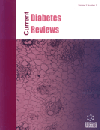
Full text loading...
Diabetes, regarded as a prevalent metabolic disorder with multifactorial origins, contributes to a myriad of global complications. These cumulate an elevated susceptibility to kidney failure, nerve impairment, blindness, atherosclerosis, heart ailments, and even strokes. Recent investigations underscore the diverse roles of associated biomarkers in diabetes progression. Among these are biomarkers for diabetes mellitus such as DPP-4, PPAR-ϒ, SGLT-2, α-amylase, and α-glucosidase, which are linked to the onset of diabetes and its related problems. As a result of undesirable adverse consequences linked to extant synthetic antidiabetic medications, research attention is increasingly directed towards formulating natural antidiabetic drugs, aiming for enhanced efficacy and reduced complications. Cyanobacteria stand out as a pivotal repository of natural bioactive metabolites extensively harnessed for pharmaceutical and nutraceutical development. The potent bioactive compounds sourced from cyanobacteria hold substantial promise, kindling high expectations in scientific research and presenting vast prospects for drug discovery and advancement. Some of these bioactive compounds have demonstrated impressive effectiveness, displaying successful applications across various phases of clinical trials. This review strives to provide a more precise understanding of diabetes mellitus, encompassing its clinical manifestation, epidemiological data, complications, and prevailing treatment modalities. The objective of this review is to contribute researchers and readers an enhanced and accurate understanding of diabetes mellitus by covering its clinical manifestation, epidemiological evidence, difficulties, and prevailing therapeutics possibilities.

Article metrics loading...

Full text loading...
References


Data & Media loading...

